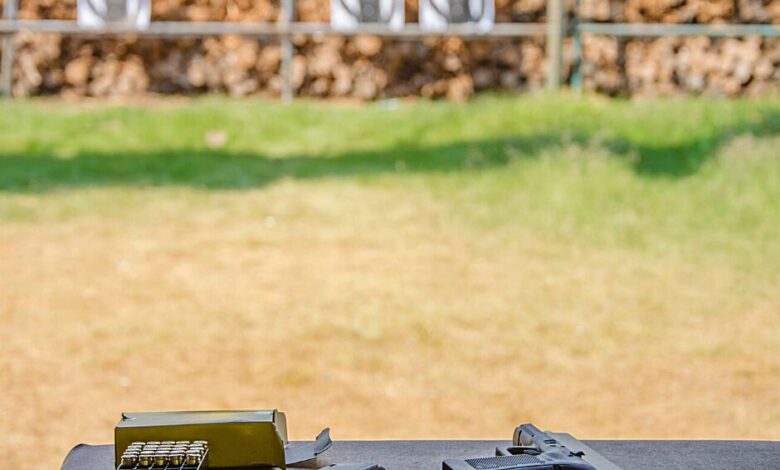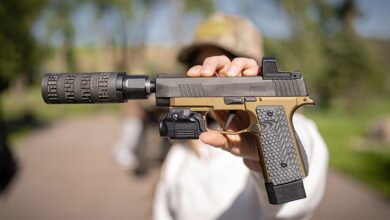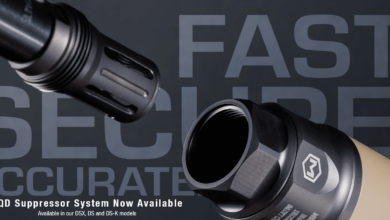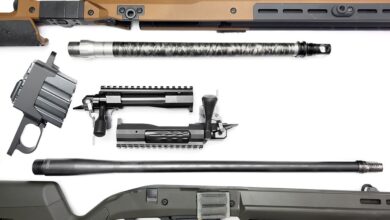Why Outdoor Firearms Training is Better Than Indoor

The decision to conduct firearms training indoors or outdoors can significantly impact the quality and effectiveness of the training. While indoor ranges have some advantages, the benefits of training outdoors generally outweigh those of an indoor setting. From improved realism and safety to more flexibility and a more authentic simulation of real-world conditions, outdoor firearms training provides numerous advantages that make it the superior choice in most situations.
Noise Reduction
One of the primary drawbacks of indoor firearms training is noise. Shooting inside a concrete box is loud. The confined space of an indoor range causes gunshots to reverberate and echo, creating a noisy environment that can be both unpleasant and dangerous for shooters, especially with larger caliber handguns and rifles. This high decibel level increases the risk of hearing damage and makes it difficult for instructors to provide clear communication and feedback to students.
You’ll still need to wear hearing protection, but outdoor ranges allow the sound of gunfire to dissipate naturally, providing a much more comfortable and controlled acoustic environment. This enables instructors to monitor and guide their students more effectively and allows shooters to hear better and process the important sensory feedback that comes with each shot. The reduced noise level also makes it easier to simulate real-world scenarios where shooters may need to communicate with partners or bystanders during an incident.
Flexibility of Target Placement
Indoor ranges are typically limited in their target placement options, with most featuring a linear arrangement of stationary targets downrange. This rigid setup does little to prepare shooters for the fluid, dynamic conditions they may encounter in self-defense or tactical situations.
On the other hand, outdoor ranges offer far greater flexibility in target placement. Instructors can set up targets at various distances, angles, and elevations, creating a more realistic and challenging training environment. This allows shooters to practice engaging multiple targets, moving targets, and targets that appear and disappear — skills essential for effective self-defense and tactical shooting.
Additionally, outdoor ranges often have more space to incorporate other training elements, such as barricades, vehicle simulations, and other obstacles, which further enhance the realism and complexity of the exercises.
Longer Shooting Distances
The size and layout of indoor ranges generally restrict shooters to relatively short engagement distances, typically 25 yards or less. While this may be sufficient for some basic marksmanship training, more is needed to prepare shooters for the longer-range situations they may encounter in real-world scenarios.
Conversely, outdoor ranges often have the luxury of significantly more space, allowing for shooting distances of 50 yards, 100 yards, or even farther. This enables shooters to practice their long-range accuracy and target acquisition skills, which is crucial for scenarios involving vehicle-mounted threats, active shooters at a distance, or long-range defensive engagements.
Training at longer ranges also allows instructors to better assess a shooter’s true marksmanship ability, as shorter distances can sometimes mask underlying issues with technique or equipment.

More Room to Move
The confined nature of indoor ranges severely limits shooters’ ability to move and maneuver during training. This static approach does little to prepare them for the dynamic, high-stress situations they may face in the real world, where the ability to move, change positions, and react quickly to changing circumstances is often essential for survival.
Again, outdoor ranges win this round, too, by providing ample space for shooters to practice movement-based drills, such as lateral movement, bounding, and shooting on the move. This enhances the realism of the training and helps develop the critical physical and mental skills required for effective self-defense and tactical response.
Outdoor ranges also often have the flexibility to incorporate more complex training scenarios, such as those involving multiple shooters, hostages, or other variables that require shooters to move, communicate, and realistically coordinate their actions.
Drawing from a Holster
One of the most significant limitations of indoor ranges is the prohibition of drawing from a holster. This restriction is often imposed due to safety concerns and the confined nature of the indoor environment, but it severely compromises the realism and effectiveness of the training. For example, the indoor range where I teach requires members to be certified by one of our instructors before they can draw from a holster on the range. Certified members must always carry their cards with them while on the range so we and other shooters know who is allowed to draw from a holster.
Outdoor ranges, on the other hand, typically allow shooters to practice drawing from a holster, an essential skill for self-defense and tactical scenarios. This not only helps shooters develop the muscle memory and technique required for a smooth, efficient draw, but it also allows them to practice integrating their draw with other essential skills, such as target acquisition, trigger control, and shot placement.
The ability to draw from a holster is a critical component of real-world firearms use, and training without it can leave shooters ill-prepared for the challenges they may face in a true self-defense or tactical situation.
Environmental Factors
In addition to the tactical and safety advantages of outdoor firearms training, there are also significant environmental factors to consider. Indoor ranges are often artificially lit, temperature-controlled, and devoid of the natural elements that shooters may encounter in the real world. So long as your real-world shootout takes place in a climate-controlled environment set at the perfect temperature, you’ll be fine. But that’s not likely to happen.
Instead, outdoor ranges expose shooters to various environmental conditions, such as wind, sunlight, precipitation, and temperature fluctuations, helping them prepare for the challenges they may face in a real-world scenario and allowing them to develop the adaptive skills and mental fortitude required to perform under stress.
Furthermore, the natural setting of an outdoor range can have a calming and restorative effect on shooters, helping to reduce the anxiety and stress that can often accompany firearms training. This can lead to improved focus, better decision-making, and more effective and safer training outcomes. It’s hard to feel entirely comfortable inside a windowless concrete box.
Parting Shot
While indoor firearms training certainly has its place, the overwhelming benefits of outdoor training make it the superior choice in most situations. From the reduction of noise and the increased flexibility of target placement to the ability to train at longer distances and with more freedom of movement, outdoor ranges provide a more realistic and effective training environment that better prepares shooters for the challenges they may face in the real world.
The post Why Outdoor Firearms Training is Better Than Indoor appeared first on The Mag Life.
Read the full article here






